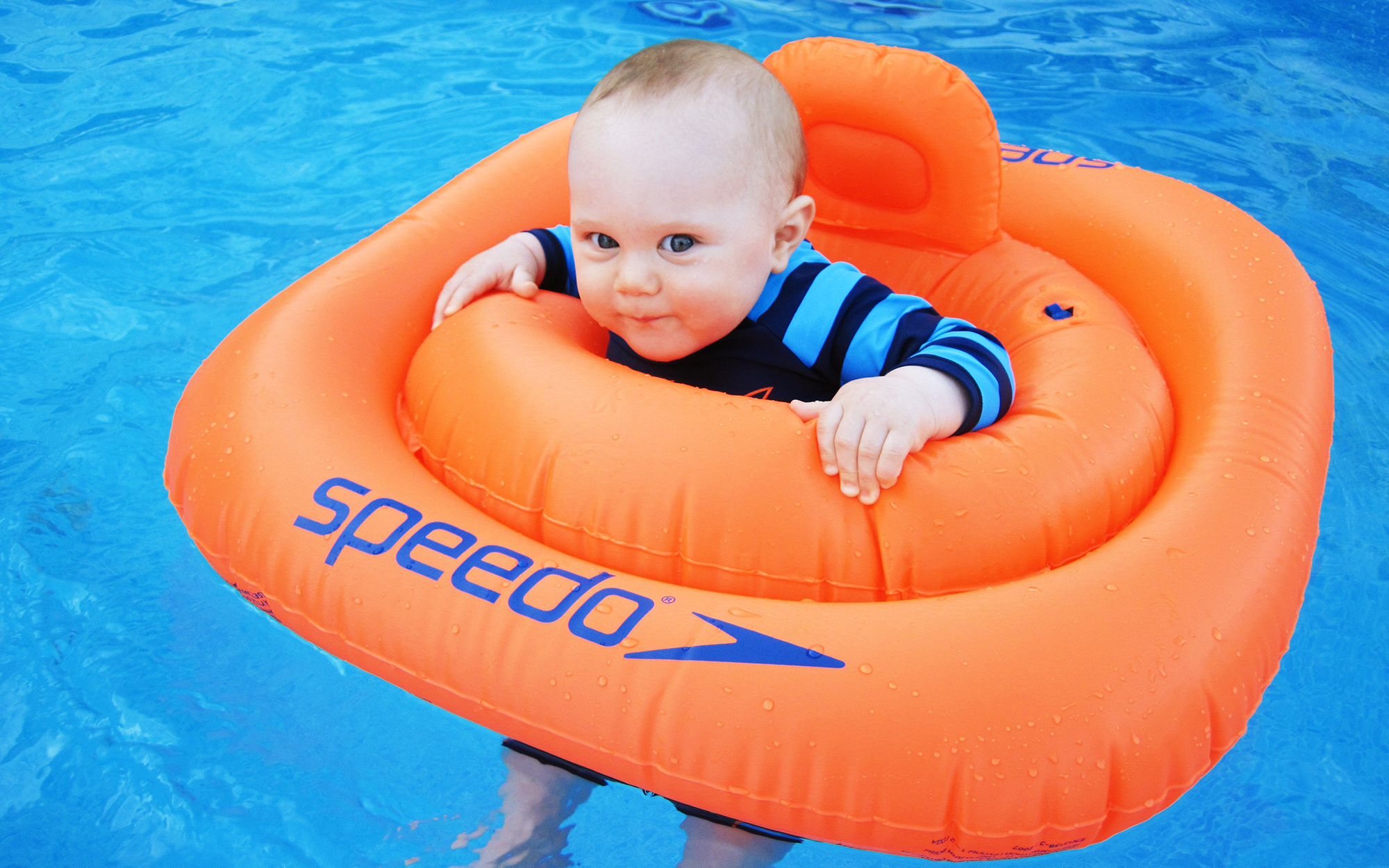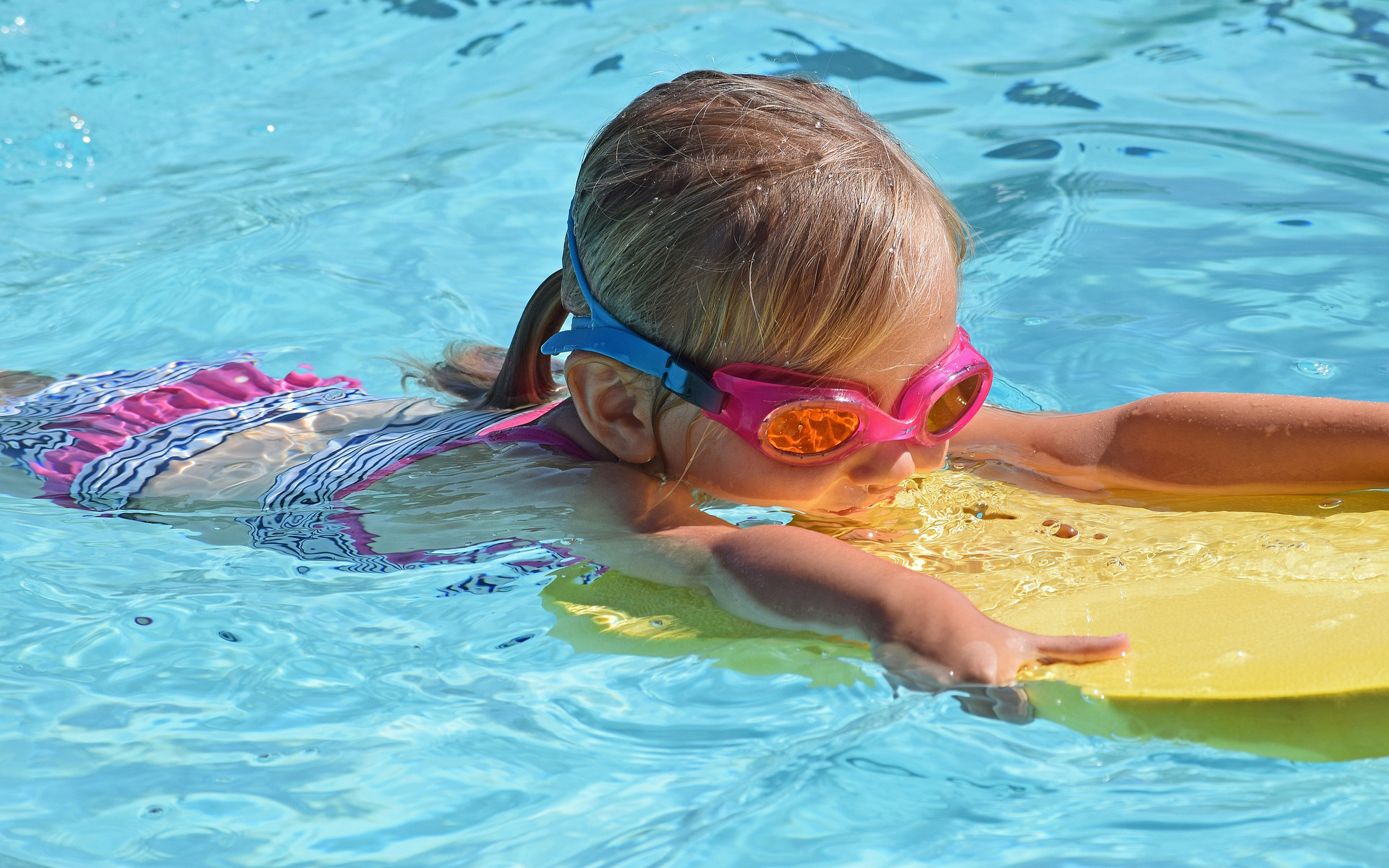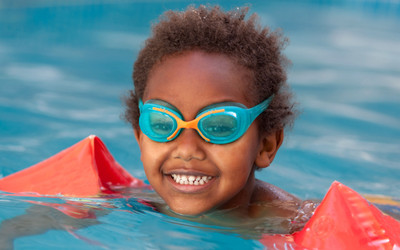Pool Floats and Swim Aids Build Young Swimmers' Confidence in the Water
26th Jun 2023
Whether your child loves the water or is a timid toe-dipper, no child is a natural-born swimmer. Swimming is a skill that must be learned.
Most parents consider learning to swim an important life skill for their children to master. In fact, the Centers for Disease Control (CDC) says that “more children ages 1 to 4 die from drowning than any other cause of death.” Since most of those drownings occur in backyard swimming pools, being able to keep their head above water could save your child’s life.
When Should You Teach Your Child to Swim?
Babies can start swim classes with their parents at the YMCA at 6 months. Rather than formal swim lessons, at this age babies splash in the water and play simple games. The goal is to make your baby familiar and comfortable with being in the pool. Babies can learn to float before they are a year old, but parents should always be within arm’s reach.
Around age 2, children can learn to kick and hold their breath underwater. By around age 4, most children will have the physical coordination necessary to propel themselves in water. Many kids who are kindergarten age can be introduced to different swim strokes.
Remember, while you might want to teach your child to swim at an early age, they may have other ideas. But don’t worry - it’s never too late to learn to swim!

Where Can I Take My Child for Swimming Lessons?
If you have a swimming pool, you’ve likely already taught your child some swimming basics. Many parents go one step further and enroll their child in formal swimming lessons. In addition to the YMCA, swimming classes are offered at private clubs, swim schools, community pools and through the Red Cross.
How to Teach a Child to Swim
Let Them Get Comfortable in the Water
Helping children become comfortable in the water is an important step in learning to swim. Many kids love playing in the water of a shallow kiddie pool before graduating to an above-ground or inground swimming pool. Public splash pads and wading pools are other fun ways to introduce kids to water.
Navigating the Pool
Kids swimming lessons often begin with basic exercises like blowing bubbles and holding the sides of the pool while kicking. Toys, floats and games help children acclimate to the water.
Other important skills include learning how to float and make basic arm and leg movements, like the doggy paddle or freestyle stroke. Treading water is another crucial water safety skill kids should learn.
As they learn how to swim, give children time to practice their new skills regularly.
Teach Them Water Safety Rules
As you teach your child to become more mobile in the water, remember to also educate them about the rules of water safety. Teach them to never swim alone, to stay away from deep water without adult supervision and to understand basic water rescue techniques.

Helpful Swimming Aids
Parents who are teaching kids to swim don’t have to go it alone. You can find a wide variety of baby floats and baby-and-mom pool seats that allow very young children to bob around in the pool. Other swim aids, like toddler-sized arm floats or a swim vest, are useful for the child’s safety and parents’ peace of mind.
A kickboard can help your child practice specific swimming skills like kicking, propelling themselves in the water and moving in an intended direction. Some kids might also like to use swim goggles to keep water out of their eyes while swimming.
Most children don’t need to be encouraged to use pool noodles, inner tubes or other pool floats while playing in the pool. All of these toys help children move about more easily in the water as they gain confidence and build their swimming skills.
There are all sorts of water toys that you can toss in the water for kids to retrieve. Diving toys are a fun way to help more advanced swimmers improve breath control and underwater swimming skills.
Remain Watchful
The American Academy of Pediatrics warns parents that teaching kids to swim doesn’t make them “drown proof.” They advise “constant, focused supervision when your child is in or near a pool or any body of water.” As well, use fencing, locks and other barriers to prevent children from entering the pool area during non-swim time.
Swimming is one of the most enjoyable and common childhood activities. It’s good exercise and promotes hours of fun (away from TV and computer games!) Playing pool games encourages communication and cooperation.
If you have a pool or are ready to introduce your child to the water, there’s no better time than summer to take the plunge and start swimming!
You may also like:
School’s Out, Swimming is In: 10 Important Pool Rules for Kids
10 Classic and New Games for Your Kids’ Best-Ever Pool Party
